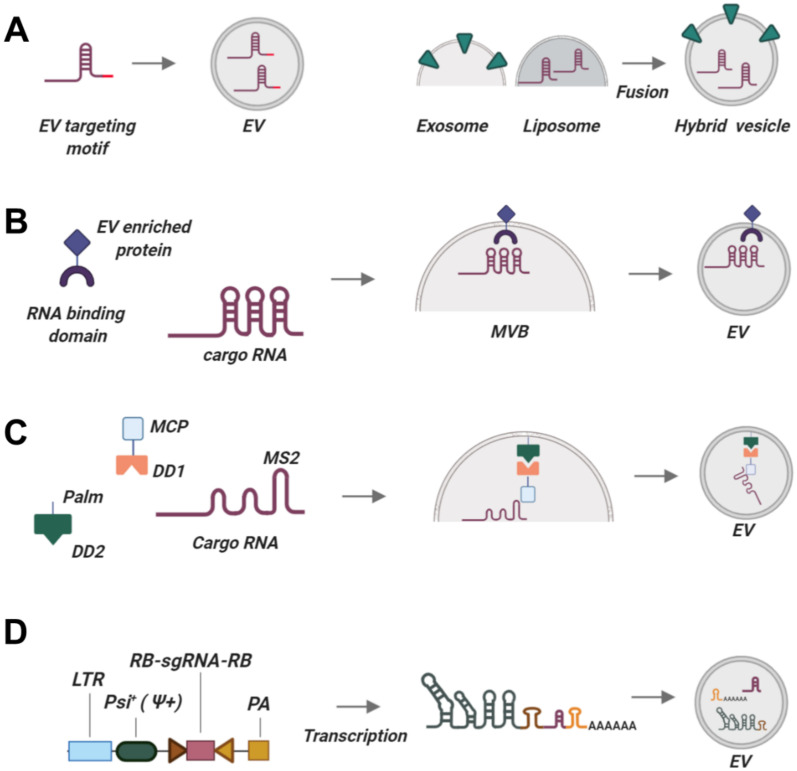Figure 2.
Existing and prospective technologies for tagging sgRNAs to be packaged into EVs. (A) Constructing synthetic RNA chimeras with EV-targeting motifs may enrich these RNAs in EVs. (B) Using EV-enriched proteins coupled with RNA-binding domains. (C) Packaging based on the interaction of MCP protein with an MS2 aptamer introduced into cargo RNA. Palm signal localizes to the membrane of EVs together with dimerization domain DD2. MCP is fused to dimerization domain DD1. Cargo RNA interacts with MCP via MS2 aptamer. Upon incoming signal (light or a small chemical), DD1 and DD2 dimerize, bringing together all three components so that cargo RNA is packaged into EVs. After EVs are produced, DD1 and DD2 dissociate, releasing cargo RNA into the lumina of EVs. (D) sgRNA packaging device, a part of the NanoMEDIC platform. A long RNA is encoded intracellularly, comprising the Psi+ EV-localization signal and two ribozymes. Upon loading into EVs, the long construct is self-cleaved by ribozymes, releasing the sgRNA with no additional RNA sequences. Abbreviations are explained in the text. This picture was created in BioRender.

